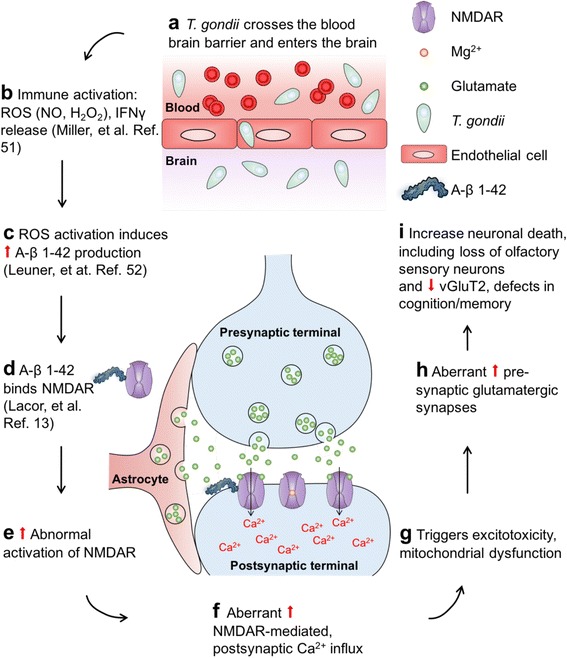Fig. 10.

Working model describes how T. gondii possibly leads to early signs of AD. a, b T. gondii infection in the brain causes immune responses such as activation of reactive oxygen species (ROS) and release of interferon gamma (IFNγ). c–e Activated ROS induces A-β 1–42 production in the brain, which binds NMDAR and leads to abnormal NMDAR activation [14]. f Aberrant NMDAR activation results in a dramatic increase in Ca2+ influx in postsynaptic neurons. g–i This triggers toxic pathways that result in a pathological increase in presynaptic glutamate release, which then leads to loss of olfactory sensory neurons, reduction in VGLUT2, and, ultimately, early signs of AD
